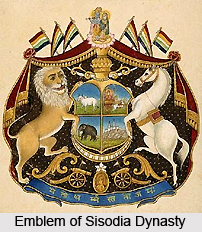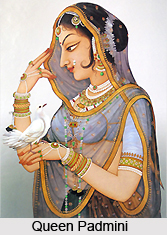 The history of Chittorgarh dates back to 8th century and from then on it has been the most severely contested seats of power and politics. Chittor is a fortified city and as a result all the warrior clans wanted to bring it under their suzerainty. Hence the power games ensued. In the middle of the 8th century Bappa Rawal, the founder of Sisodia dynasty received it as a dowry. He married the last Solanki princess and with her Chittorgarh also came under his rule. The beauty of Chittorgarh cannot be put into words. Covering an area of 280 hectares it is dotted with temples, towers, palaces and not to forget the massive fort of Chittorgarh. As the travelers look into the region they will realize that it would have been the dream of many rulers to bring Chittorgarh under their control.
The history of Chittorgarh dates back to 8th century and from then on it has been the most severely contested seats of power and politics. Chittor is a fortified city and as a result all the warrior clans wanted to bring it under their suzerainty. Hence the power games ensued. In the middle of the 8th century Bappa Rawal, the founder of Sisodia dynasty received it as a dowry. He married the last Solanki princess and with her Chittorgarh also came under his rule. The beauty of Chittorgarh cannot be put into words. Covering an area of 280 hectares it is dotted with temples, towers, palaces and not to forget the massive fort of Chittorgarh. As the travelers look into the region they will realize that it would have been the dream of many rulers to bring Chittorgarh under their control.
For the next eight centuries the descendents of Bappa Rawal ruled his kingdom. During this time period Chittor was almost left unattended and the district faced invasions and plundering thrice. Stories relating to Chittor are famous worldwide. Chivalry, sacrifice and bravery are closely linked with such stories. One of the most popular stories relating to Chittorgarh is of Queen Padmini. Her matchless beauty has earned fame across the kingdom. In those times, around 1303, Allauddin Khilji was expanding the boundaries of the Delhi Sultanate. Intrigued by the tales of Padmini`s mesmerizing beauty, wit and charisma the Sultan decided to witness it himself. On his orders the sultan`s armies surrounded the fortified city. Then he sent a message to the king, Rana Rattan Singh that his city would be spared if the Sultan is allowed to meet the queen. With doom standing in front of the kingdom the raja compromised. It was conveyed to the sultan that he could see the reflection of Padmini.
Agreeing on this the Sultan went to see the queen. It is said that he was completely enamored by her. Although he thanked the raja and prepared to leave, Allauddin Khilji had other plans. As the hospitable host came to escort the sultan out his men were waiting for the Rajput king. As soon as he came out he was captured. What followed was an excellent strategy by the queen to liberate her husband. According to the plan a messenger from the Rajputs went to the sultan and said that Padmini would like to meet him. Dozens of palanquins went to the Sultan`s camp. As the veils were lifted Rajput warriors emerged from those palanquins and were successful in freeing the king. However in this process Chittor lost 7000 extraordinary warriors.
 The sultan was furious at this and launched fresh attacks on Chittorgarh. The city was in great danger as the best of the warriors had been sacrificed while freeing the raja. What followed was unimaginable and is till date one of the most popular events in the history of Chittorgarh. Padmini along with all the other women of the city performed mass jauhar. Jauhar is a kind of rite that is performed by women they save their honor by giving up their lives. Self-respect was more important to them than their lives. Hence when the sultan`s victory became inevitable the women killed themselves. The men watched as silent spectators. As the troops came near they waged war against the sultan with all their might. Such integrity, such bravery have been barely seen in the world history.
The sultan was furious at this and launched fresh attacks on Chittorgarh. The city was in great danger as the best of the warriors had been sacrificed while freeing the raja. What followed was unimaginable and is till date one of the most popular events in the history of Chittorgarh. Padmini along with all the other women of the city performed mass jauhar. Jauhar is a kind of rite that is performed by women they save their honor by giving up their lives. Self-respect was more important to them than their lives. Hence when the sultan`s victory became inevitable the women killed themselves. The men watched as silent spectators. As the troops came near they waged war against the sultan with all their might. Such integrity, such bravery have been barely seen in the world history.
These tales of love, self-respect and valor make the district of Chittorgarh more fascinating.
Another famous king who deserves to be mentioned is Maharana Pratap. Stories of him and his horse, Chetak are repeated even today. He was one of those brave warriors who refused to submit the Mughals. He developed the art of guerilla warfare and harassed the Mughals throughout his lifetime. The battles of Haldighati will be narrated with lot of enthusiasm to the guests.
Besides him there were other kings too before Maharana Pratap ascended the throne. Rana Kumbha and Rana Sanga were the other prominent rulers of Chittorgarh.



















